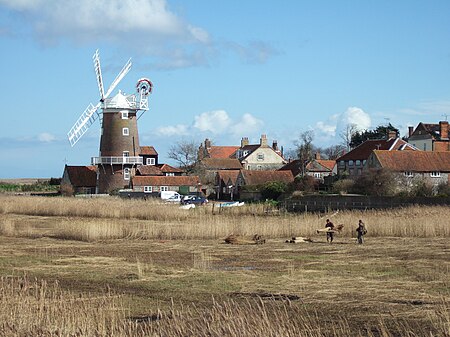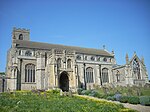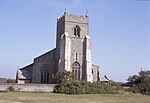Cley next the Sea
All pages needing cleanupBeaches of NorfolkCivil parishes in NorfolkCley next the SeaEngvarB from May 2016 ... and 4 more
North NorfolkPopulated coastal places in NorfolkVillages in NorfolkWikipedia introduction cleanup from December 2020

Cley next the Sea (, , is a village and civil parish on the River Glaven in English county of Norfolk, 4 mi (6 km) north-west of Holt and east of Blakeney. The main A149 coast road runs through the centre of the village, causing congestion in the summer months due to the tight, narrow streets. It lies within the Norfolk Coast AONB (Area of Outstanding Natural Beauty) and the North Norfolk Heritage Coast.
Excerpt from the Wikipedia article Cley next the Sea (License: CC BY-SA 3.0, Authors, Images).Cley next the Sea
High Street, North Norfolk Cley Next The Sea
Geographical coordinates (GPS) Address Nearby Places Show on map
Geographical coordinates (GPS)
| Latitude | Longitude |
|---|---|
| N 52.9525 ° | E 1.0430555555556 ° |
Address
High Street
High Street
NR25 7RF North Norfolk, Cley Next The Sea
England, United Kingdom
Open on Google Maps










